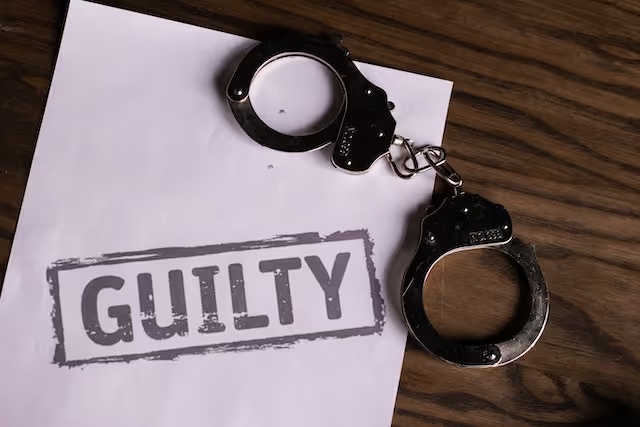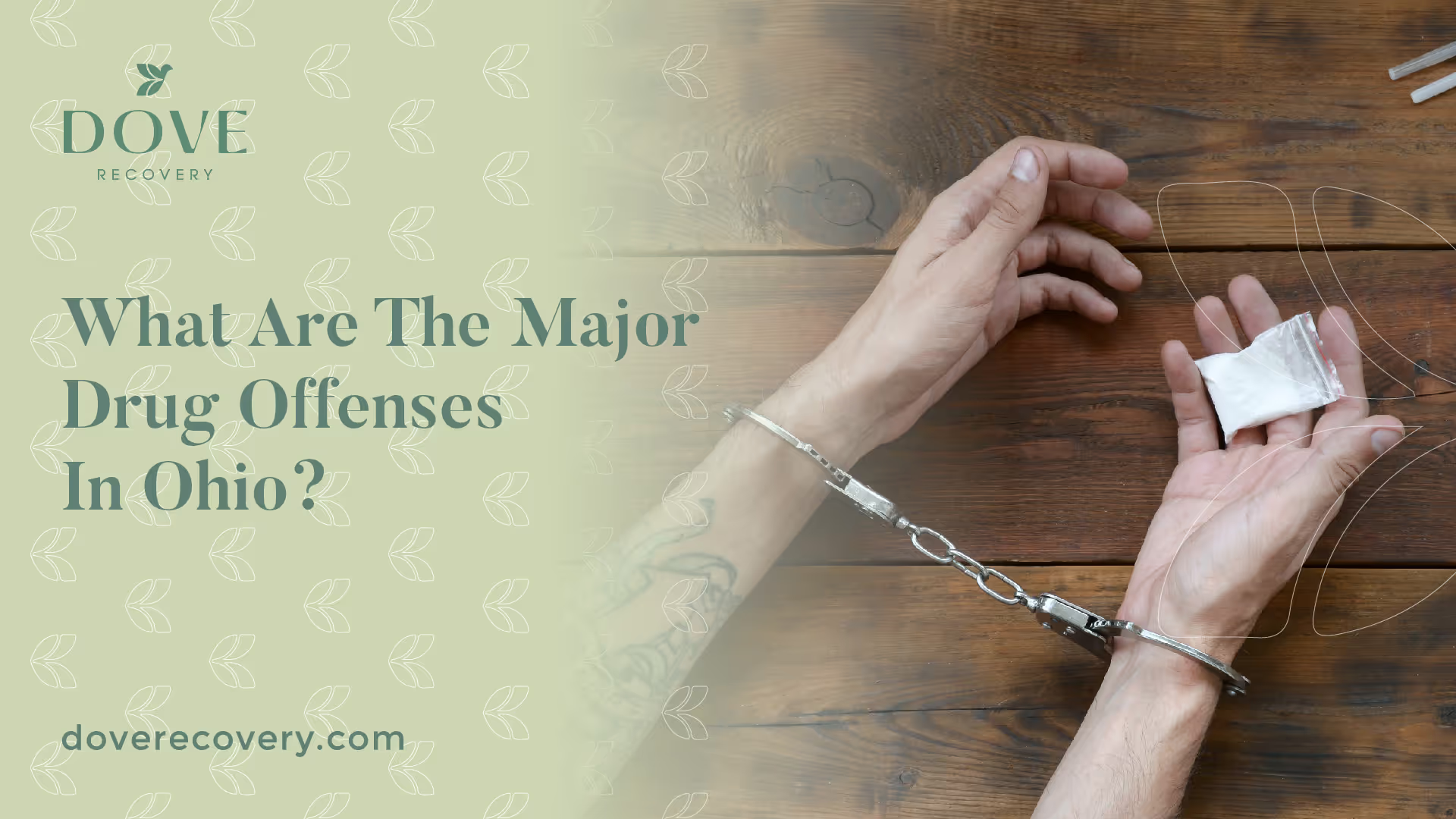What Are The Major Drug Offenses In Ohio?

What Are The Major Drug Offenses In Ohio?
If you're living in Ohio, it's important to understand what constitutes a major drug offense in the state. Ohio has strict drug laws and the penalties for drug offenses can be severe. In this article, we'll provide an overview of what is considered a major drug offense in Ohio and the potential consequences.

Types of Major Drug Offenses in Ohio
Ohio law classifies drug offenses into five different schedules based on the potential for abuse and dependence. Schedule I drugs have the highest potential for abuse and no medical use, while Schedule V drugs have the lowest potential for abuse and accepted medical use. The following are considered major drug offenses in Ohio:
Trafficking
Trafficking refers to the illegal sale, delivery, or transportation of drugs. The penalties for trafficking depend on the type and amount of drugs involved. For example, trafficking in heroin, cocaine, or fentanyl can result in a prison sentence of up to 11 years and fines of up to $20,000.
Possession
Possession of drugs is also considered a major drug offense in Ohio. The penalties for possession depend on the type and amount of drugs involved. For example, possession of cocaine can result in a prison sentence of up to one year and fines of up to $2,500.
Manufacturing
Manufacturing, or the production of drugs, is also a major drug offense in Ohio. The penalties for manufacturing depend on the type and amount of drugs involved. For example, manufacturing heroin can result in a prison sentence of up to 11 years and fines of up to $20,000.
Cultivation
Cultivation, or the growing of drugs, is also considered a major drug offense in Ohio. The penalties for cultivation depend on the type and amount of drugs involved. For example, cultivation of marijuana can result in a prison sentence of up to eight years and fines of up to $15,000.
Prescription drug fraud
Prescription drug fraud refers to the illegal obtaining of prescription drugs. The penalties for prescription drug fraud depend on the type and amount of drugs involved. For example, obtaining prescription drugs by fraud can result in a prison sentence of up to one year and fines of up to $2,500.
What Amounts Lead to a Major Drug Offender Designation?
The quantity of controlled substances involved is an important factor in determining whether an offender would be considered a major drug offender under Ohio law. For instance, possession of more than 100 grams but less than 200 grams of cocaine is considered a first-degree felony carrying a prison term ranging from three to eleven years with fines up to $20,000.
Similarly, cultivation of at least 1,000 grams but less than 5,000 grams of marijuana is also considered a first-degree felony punishable by up to 11 years in prison and fines reaching $20,000. It is important for anyone facing drug charges in Ohio to understand the potential consequences they face based on the amount and type of drugs involved.
Potential Consequences of Major Drug Offenses in Ohio
Drug offenses in Ohio are considered to be serious crimes that come with severe consequences. These consequences can include:
Fines
Depending on the type and quantity of drugs involved, fines can range from several thousands to tens of thousands of dollars.
Probation
Those convicted of a drug offense may be placed on probation, which can last for several years and involve strict conditions such as regular drug testing and mandatory attendance at treatment programs.
Community service
Offenders may be required to perform community service as a condition of their sentence. This can include activities such as cleaning up parks and highways, or working at a non-profit organization.
Prison sentences
Major drug offenses can result in lengthy prison sentences ranging from several years to life imprisonment. The length of the sentence depends on the severity of the crime, the type and amount of drugs involved, and the offender's criminal history.
Long-term consequences
Even after serving their sentences, those convicted of drug offenses may face long-term consequences that can affect their ability to lead a normal life. For example, a drug conviction can make it difficult to find employment, obtain housing or even apply for certain types of loans.
It is important to note that these are just some examples of the many possible consequences that those convicted of major drug offenses in Ohio may face.
The Prevalence of Drug Addiction in Ohio and Its Relationship to Drug Offenses
Drug addiction is a serious problem in Ohio, with the state ranking among the top five in the nation for opioid-related overdose deaths. According to data from the Ohio Department of Health, there were 4,854 unintentional drug overdose deaths in Ohio in 2017 alone. This represents a rate of 46.3 deaths per 100,000 residents, which is more than double the national average.
The prevalence of drug addiction in Ohio has a direct relationship to drug offenses. Many individuals who are addicted to drugs turn to illegal activity to support their habit, such as theft or drug trafficking. In fact, studies have shown that there is a strong correlation between drug use and criminal behavior.
Additionally, those who are struggling with addiction may find themselves facing drug charges even if they did not intend to commit a crime. For example, possession charges can result from simple drug use or being caught with drugs for personal use.
It is important for individuals who are struggling with addiction to seek help before they become involved in criminal activity or face legal consequences. There are many resources available in Ohio for those seeking treatment for substance abuse disorders, including counseling services and medication-assisted treatment programs.
Alternatives to Incarceration for Non-Violent Drug Offenses
While incarceration may be necessary in some cases, there are alternatives available for individuals convicted of non-violent drug offenses. These alternatives can be more effective at addressing the root causes of drug addiction and helping individuals get back on track.
Community Service
One alternative to incarceration for non-violent drug offenses is community service. This involves performing a certain number of hours of service work in the community as part of the offender's sentence. Community service can help offenders give back to the community, while also providing them with a sense of purpose and responsibility.
Probation with Mandatory Treatment Programs
Another alternative is probation with mandatory treatment programs. This involves being placed on probation and required to attend drug treatment programs on a regular basis. These programs may include counseling, group therapy, or medication-assisted treatment. Probation with mandatory treatment can help offenders address their addiction issues and develop coping skills to avoid future relapse.
Benefits of Alternatives to Incarceration
There are several benefits to using alternatives to incarceration for non-violent drug offenses. For one, these alternatives can be less expensive than incarcerating individuals, which can save taxpayers money. Additionally, alternatives such as community service or probation with mandatory treatment can help individuals address their addiction issues and improve their chances of leading a successful life after their sentence has been served.
It is important to note that not all individuals may be eligible for alternative sentencing options based on the type and severity of their offense or other factors such as prior criminal history. However, for those who are eligible, alternatives to incarceration can provide an opportunity for rehabilitation and a second chance at leading a productive life free from addiction and criminal activity.
The Effectiveness of Rehabilitation Programs for Individuals Convicted of Drug Offenses
Rehabilitation programs can be an effective way to help individuals who have been convicted of drug offenses recover from addiction and avoid future criminal activity. These programs can include counseling, group therapy, medication-assisted treatment, and other forms of support.
Studies have shown that rehabilitation programs can reduce recidivism rates among those convicted of drug offenses. In one study, participants who completed a drug treatment program had a 40% lower rate of re-arrest than those who did not complete the program.
Rehabilitation programs can also provide individuals with the tools they need to manage their addiction and avoid relapse. This can include developing coping skills, learning how to identify triggers for drug use, and building a support network.
While not all rehabilitation programs may work for every individual, there are many different options available in Ohio for those seeking help with substance abuse disorders. It is important for individuals who have been convicted of drug offenses to take advantage of these resources in order to address their addiction issues and avoid future criminal activity.
Conclusion
In conclusion, drug offenses in Ohio are taken seriously and can result in severe consequences. The state has strict laws regarding drug trafficking, possession, manufacturing, cultivation, and prescription drug fraud. It is important for individuals to understand the potential consequences they may face based on the type and amount of drugs involved.
While incarceration may be necessary in some cases, alternatives such as community service or probation with mandatory treatment programs can provide an opportunity for rehabilitation and a second chance at leading a productive life free from addiction and criminal activity.
Overall, it is crucial for those struggling with addiction to seek help before they become involved in illegal activity or face legal consequences.
Sources:
- Ohio Revised Code § 2925.01 (2021)
- Ohio Revised Code § 2925.03 (2021)
- Ohio Revised Code § 2925.04 (2021)
- Ohio Revised Code § 2925.05 (2021)
- Ohio Revised Code § 2925.23 (2021)
